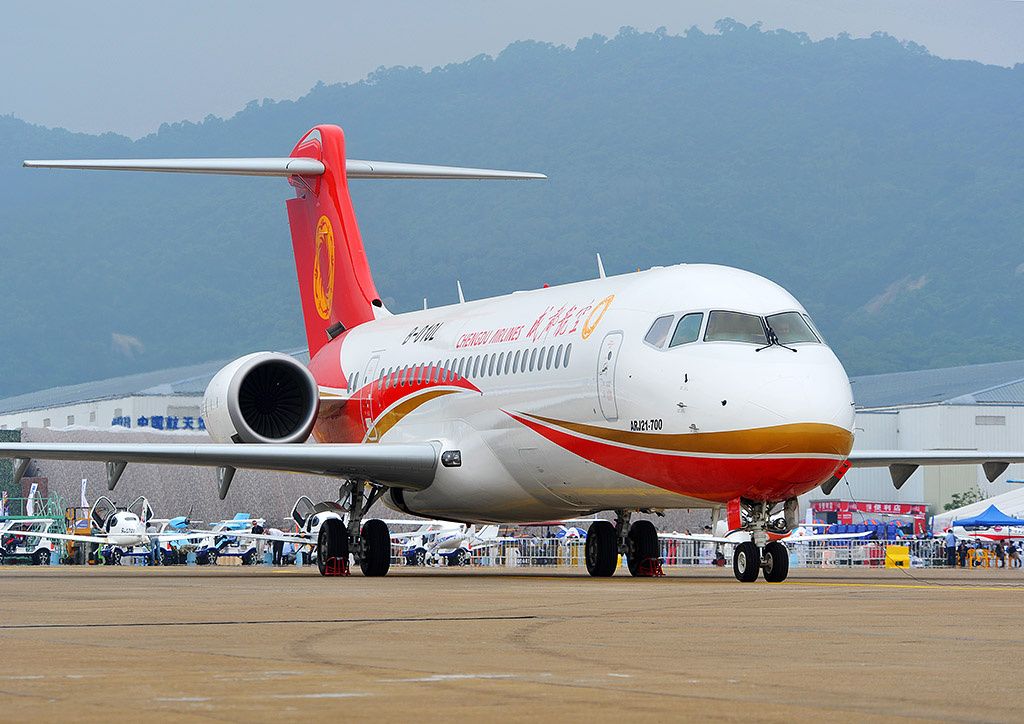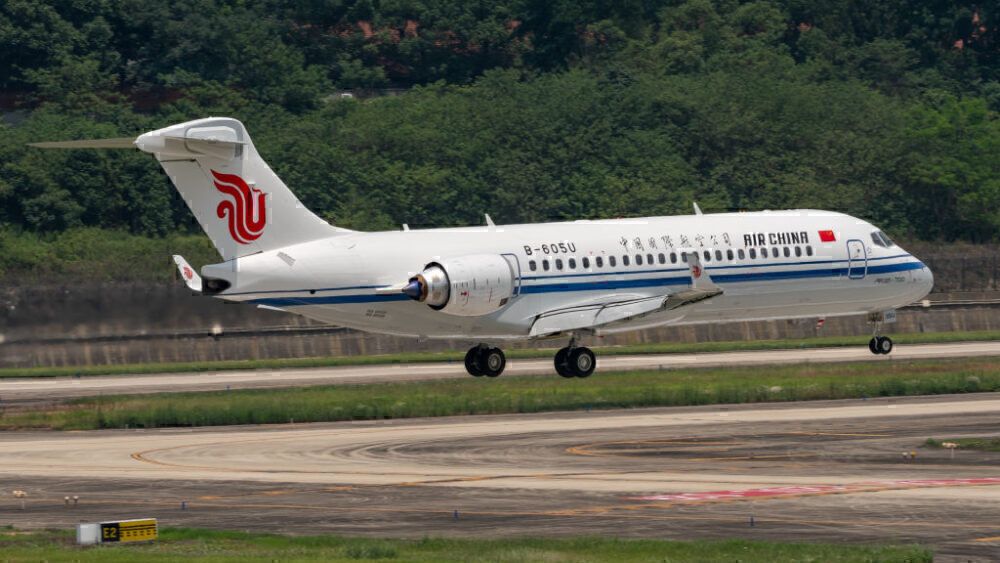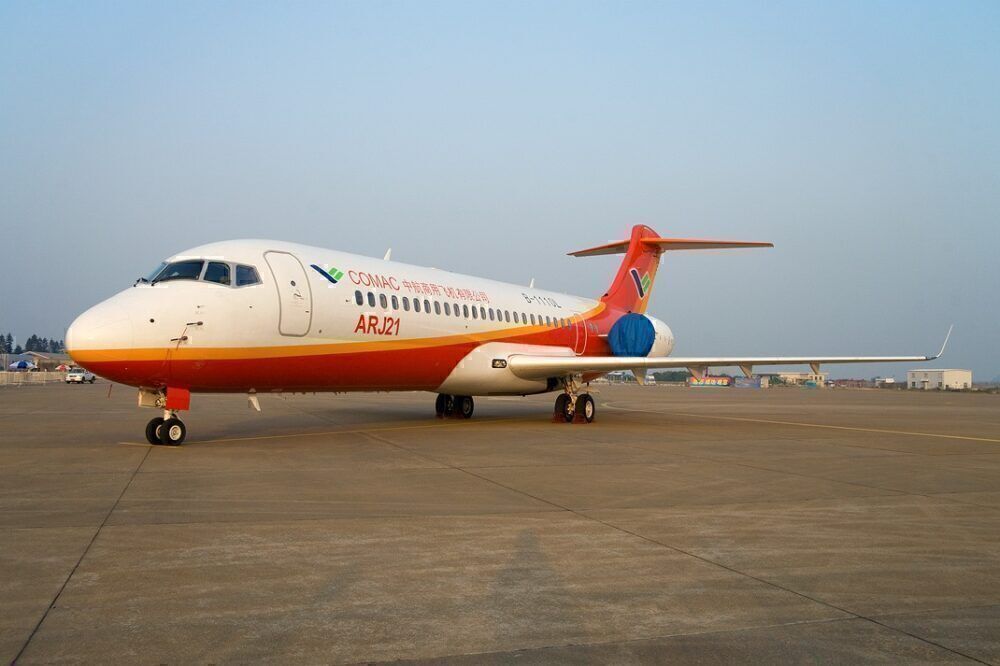China's attempts to take on Boeing and Airbus with a viable homegrown jet has received a boost. Deliveries of the ARJ21 regional jet hit new highs in 2020. The Commercial Aircraft Corporation of China (COMAC) said they delivered 24 ARJ21 aircraft to customers over the year. That brings the total number of ARJ21s delivered to 46.
COMAC delivers 24 ARJ21s in 2020
Chinese news agency Xinhua says the regional jets have gone to various Chinese carriers, including Air China, China Eastern Airlines, China Southern Airlines, Chengdu Airlines, China Express Airlines, Jiangxi Air, and Genghis Khan Airlines. Since first flying in 2017, the jets have flown 1.6 million passengers without an incident.
According to COMAC, the ARJ21 is China's first short- to medium-range turbofan regional aircraft built to international aviation standards. The aircraft has a layout of 78 to 90 seats, and a range of 2,225 to 3,700 kilometers. COMAC says it has taken a total of 616 orders for the plane from 23 airline customers.
In addition to the ARJ21, COMAC has produced test prototypes of a larger aircraft called the C919. The aircraft type had an initial test flight in 2017 but is still a couple of years off flying paying passengers. Also on the boards but not yet in the air is a widebody jet known as the C929.
Stay informed: Sign up for our daily aviation news digest.
COMAC competes against regional jet powerhouse Embraer
As Simple Flying's Justin Hayward reported yesterday, state-backed aircraft manufacturers can be an attempt to break up the cozy aircraft manufacturing duopoly enjoyed by Airbus and Boeing. To date, the Chinese Government has sunk at least US$45 billion into this exercise. However, while COMAC sticks to the ARJ21, the direct competition is the dominant regional jet manufacturer, Embraer.
In contrast to COMAC, Brazil's Embraer delivered 28 jets in the three months to September 30, 2020, and 59 jets in the nine months to September 30. While Embraer might seem to have the upper hand in the regional jet market, they point out how disruptions to labor markets and supply chains in 2020 can impact aircraft deliveries. In certain contexts, having a homegrown aircraft manufacturer can make sense.
That's certainly the case with the United States canvassing sanctions against COMAC, potentially barring United States-based suppliers from supplying the company. According to the Center for Strategic and International Studies, sanctions remain a live option. However, the most likely outcome of doing so will be to lock in COMAC's ongoing viability in China and turn Chinese airlines away from Boeing.
Long term trend towards smaller aircraft in China
Embraer also notes that while China's aviation market is now dominated by larger jets, it is moving towards more point to point connectivity, meaning the demand for regional jets in China will increase. If Embraer's analysis is correct, that puts COMAC in the box seat to reap the benefits.
Cirrum says while Boeing and Airbus will continue to dominate the industry over the next two decades, there will be US$400 billion worth of orders for smaller manufacturers like COMAC and Embraer. They expect passenger traffic to grow by 6% annually in China over the next two decades and the regional jet market to be worth US$175 billion. It's potentially rich pickings for COMAC.
COMAC has not said how many ARJ21s they plan to deliver in 2021. However, the aircraft manufacturer did say the pace of deliveries was accelerating as production issues got ironed out.
What do you think the future holds for COMAC? Post a comment and let us know.



